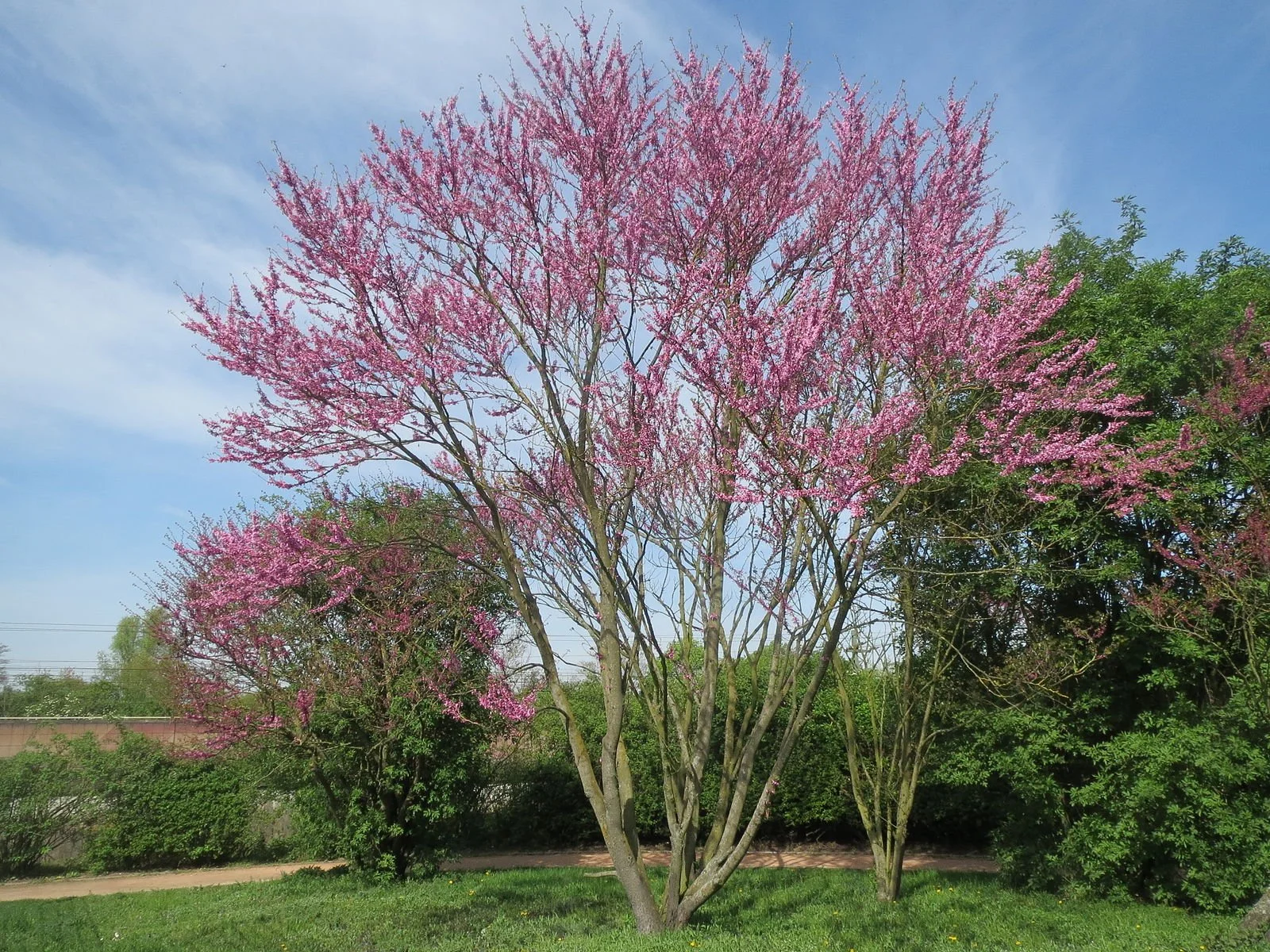Cercis siliquastrum
Cercis siliquastrum, commonly known as the Judas tree or Love tree, is a small to medium-sized deciduous tree native to southern Europe and western Asia. The tree is known for its stunning display of pink or purple flowers that appear on the bare branches before the leaves emerge in spring.
The growth habit of Cercis siliquastrum is typically a multi-stemmed shrub or small tree, growing to a height of 30 to 40 feet (9 to 12 m) and a width of 20 to 30 feet (6 to 9 m). The tree has a spreading, rounded canopy with a dense branching structure.
The foliage of Cercis siliquastrum is deciduous, arranged alternately on the branches, and is simple and ovate. The leaves are typically dark green and 1 to 2 inches (3 to 5 cm) long.
Cercis siliquastrum - Judas Tree, Flowers
The flowers of Cercis siliquastrum are produced in clusters and are pink or purple. They appear on the bare branches before the leaves emerge in spring. The flowers are followed by seed pods, which are elongated and resemble a string of beads.
Cercis siliquastrum is native to southern Europe and western Asia and is hardy in USDA zones 5 to 9. The tree is tolerant of many soil types but prefers well-drained soils rich in organic matter.
Cercis siliquastrum is utilized in landscapes as a specimen tree or as a small, flowering tree for a garden. The tree is also often used as a street tree or planted in large groups as a hedgerow. The tree is disease resistant and easy to grow.
Several cultivars of Cercis siliquastrum have been introduced to the trade, including 'Alba,' which has white flowers, and 'Bodnant,' which has deep pink flowers. The cultivar 'Bodnant' was introduced to the trade by the Bodnant Garden in North Wales, while the cultivar 'Alba' was introduced by the UK nursery Trewidden.
Other plants that are similar in characteristics, size, and habit to Cercis siliquastrum include:
The eastern redbud (Cercis canadensis).
The Chinese redbud (Cercis chinensis).
The western redbud (Cercis occidentalis).
References:
Thomas, G. S. (2004). Cercis siliquastrum. In: Flora of Turkey and the East Aegean Islands. Vol. 8. Edinburgh University Press, Edinburgh.
Bean, W. J. (1976). Trees and Shrubs Hardy in the British Isles. Vol. 2. 8th ed. John Murray, London.
Dirr, M. A. (2011). Manual of Woody Landscape Plants. 6th ed. Stipes Publishing, Champaign, IL.
Royal Horticultural Society (2021). Cercis siliquastrum. https://www.rhs.org.uk/Plants/547/Cercis-siliquastrum/Details


